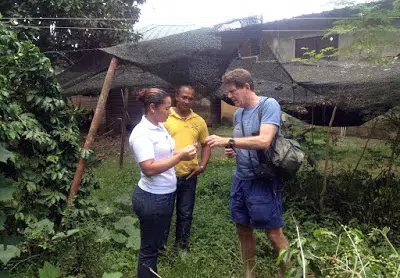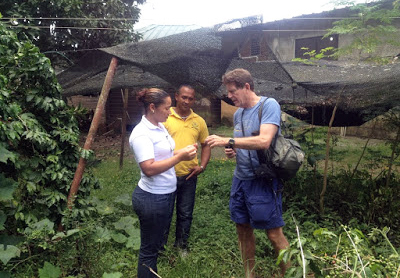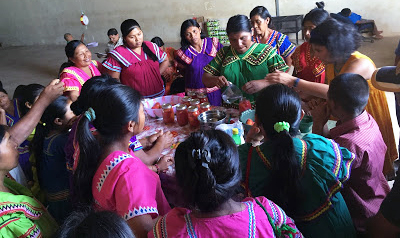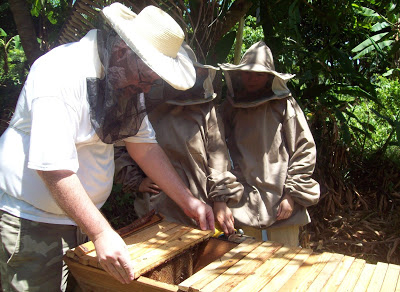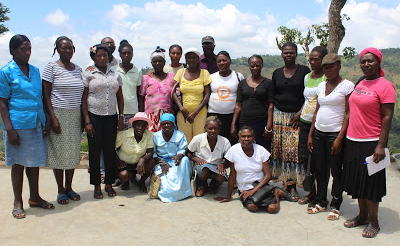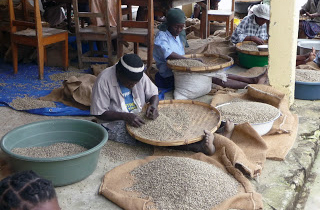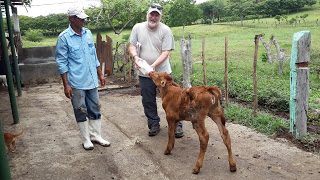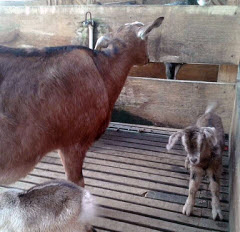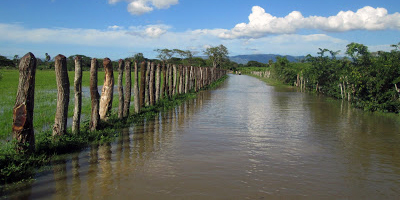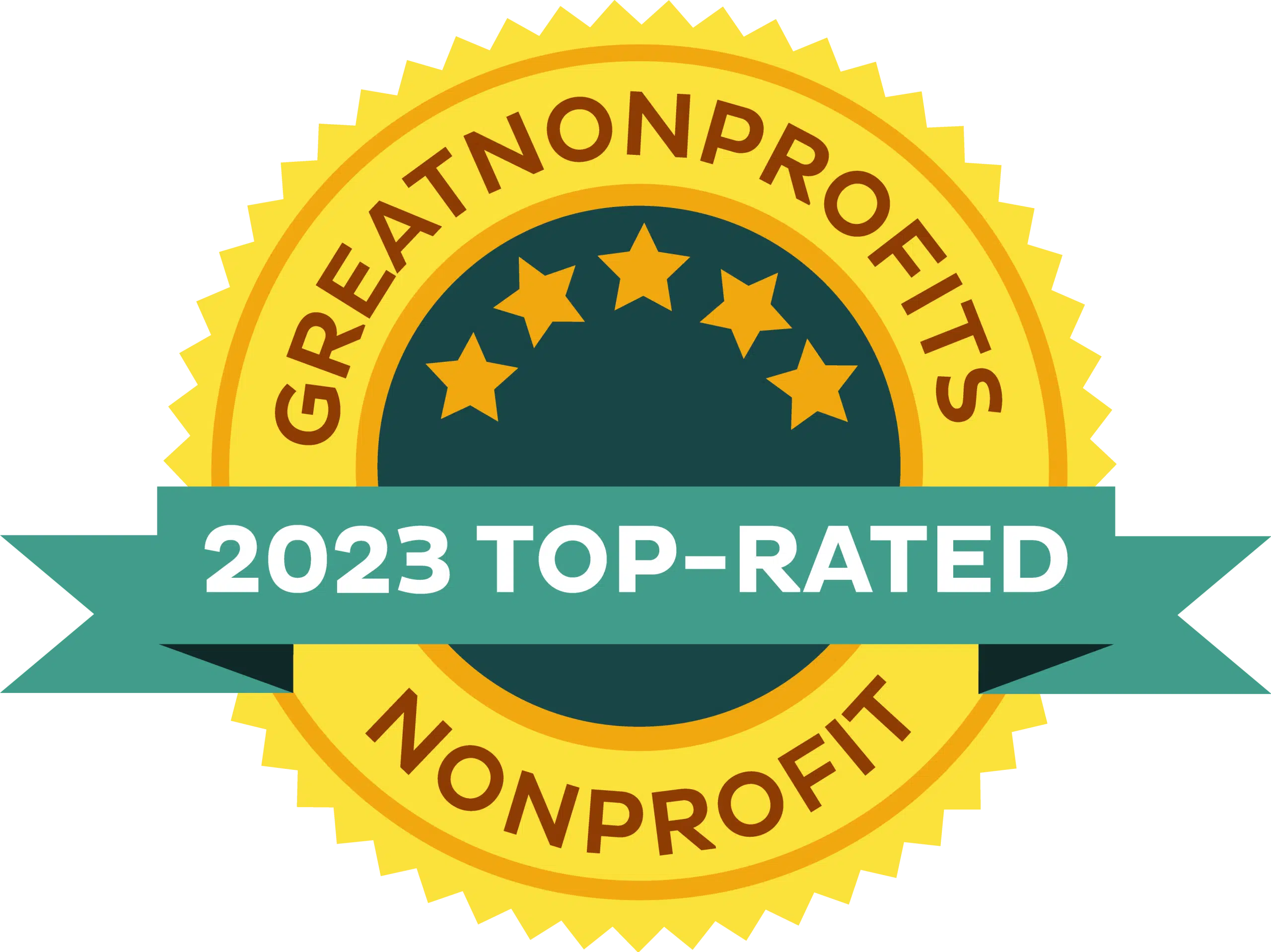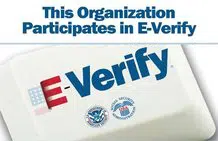This post is adapted from Partners of the Americas’ Agriculture and Food Security blog.
Partners of the Americas has been implementing our Farmer-to-Farmer (F2F) program in Latin America and the Caribbean for over 25 years, making it one of our longest-running programs in the history of our organization. There are several organizations that manage the F2F program throughout the world. Here are some other fun facts about our program:
1. We have completed over 1,988 volunteer assignments
F2F volunteer Bill Nichols in the Dominican Republic
Since 1991, we have recruited for and filled over 1,988 volunteer assignments to our four core countries and eight Flex countries. That’s a lot of helping hands!
2. We work with 139 host organizations throughout Latin America
Host organizations are cooperatives, associations, farmers groups, small businesses, public and private education institutions, public sector agencies, and individual private farmers that request and receive F2F technical assistance. We work with 29 host organizations in Haiti, 37 in Guatemala, 18 in the DR, 23 in Nicaragua, and 32 in other Flex (non-core) countries in Latin America and the Caribbean.
3. Aside from our core countries, we have also sent volunteers to Flex countries in: Bahamas, Brazil, Colombia, Ecuador, Guyana, Jamaica, Panama, and Paraguay
F2F volunteer Carmen Pacheco-Borden leads a tomato processing workshop in Panama
F2F volunteer Tom Hebert leading a training on top bar hive management in Jamaica
The F2F Flex program allows us to respond to USAID Mission requests and/or requests for volunteer assistance that fall outside of our core countries or core country projects. Through the Flex program, we are able to support a wide range of activities including ongoing activities of past F2F programs, other programs supported by Partners, and small independent projects that seek to improve agricultural development or food security throughout Latin America and the Caribbean.
4. A total of 842 recommendations have been made to farmers and host organizations
Community members in Haiti after an F2F training
Commonly referred to as the “currency” of our program, F2F volunteers leave specific, measurable, practical, and environmentally-conscious recommendations for host organizations to take the next steps towards achieving their goals. Often, these recommendations lead host organizations to request further F2F technical assistance. At the end of the program, we measure the number of recommendations that have been adopted by each host organization as the main indication of program impact and change.
5. Our program has the potential to benefit over 627,000 beneficiaries
One of the USAID indicators we measure is the number of individuals who could potentially be influenced directly, or as a direct result, of the F2F program. This includes clients and suppliers, employees, and family members. As you can see, our F2F program has great potential for the spread of benefits and impact in surrounding communities and households!
6. Many of our volunteers stay involved much longer after their assignments
Coffee producers sorting coffee beans in Haiti
A highlight of our F2F program is the relationships and connections that are built and maintained even after an assignment has ended. In Colombia, for example, three F2F volunteers worked with Zen Naturals, a small eco-cosmetic company. Later, they joined the company’s Board of Directors and continue to provide advice to staff. In Haiti, a F2F volunteer assisted a coffee business to conduct a study on the feasibility of connecting producers to U.S. markets. This volunteer, in collaboration with the host, then went on to develop a small agribusiness called HaitiCoffee.com, Inc. In its first year of business, Haiti Coffee imported 11,000 pounds of coffee to the U.S., and coffee bean sales have positively impacted the lives of over 3,000 farmer families in Haiti. Partners is a regular customer of Haiti Coffee – it is what we serve in our office!
7. Our Nicaragua F2F program helped create the first ever value-added beef brand
F2F volunteer George Roemer showing how to properly feed a calf
F2F volunteers helped organize a national commission in Nicaragua that launched a “Calf Quality” pilot program. Producers who participate in this program are required to follow specific best practices for the care and feeding of calves in order to improve the calves’ health and quality of the meat. As a result of this program, there is now a premium paid for high-quality meat, the first of its kind in the country. This pilot program is also helping to improve the brand of Nicaraguan beef and increase access for farmers-to-niche value-added markets.
8. Our Guatemala F2F program sponsored the first ever training on artificial goat insemination
Offspring from Bill Knox’s training on artificial goat insemination
Guatemala has one of the highest rates of chronic malnutrition in the Americas, particularly in the Western Highlands. Goat milk is an important tool to combat child malnutrition in the region. In 2014, F2F volunteer Bill Knox trained almost 100 producers, technicians, and veterinary students in two methods for artificial goat insemination. This technology is important because it allows technicians to travel to very rural and hard to reach areas of the country to increase the goat population and introduces improved genetics into Guatemalan goat herds. After the training, Mr. Knox was told that there had never been that type of training in the country before.
9. Our DR program was one of the first to focus on climate change
Flooded fields on the north coast of the DR
While other F2F programs may have some focus on climate change or climate-smart agriculture, our country strategy in the DR was the first to focus solely on climate change rather than on a specific agriculture sector or value chain. We found that 100% of banana producers we surveyed are affected by drought, and the majority also report being greatly affected by floods and heavy wind.
10. We have been implementing the F2F program in Haiti for two straight decades!
Partners has been continuously implementing F2F in Haiti since 1996. Although we have been implementing the F2F program in Nicaragua since 1991, we took a hiatus from working there from 2003-2008. This means Haiti is our longest continuous F2F program.
Like what you read? Learn more about our Farmer-to-Farmer program.
